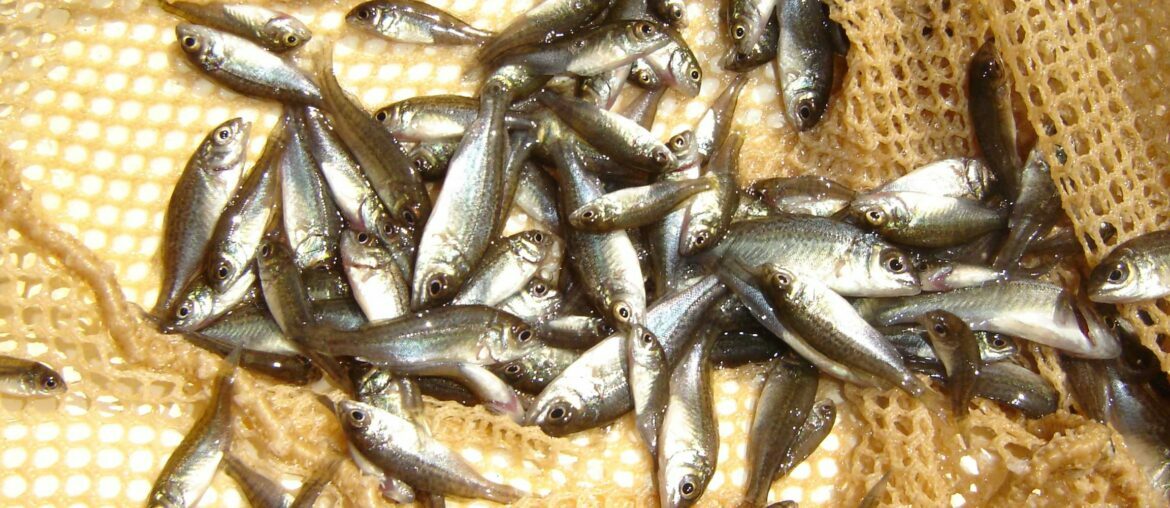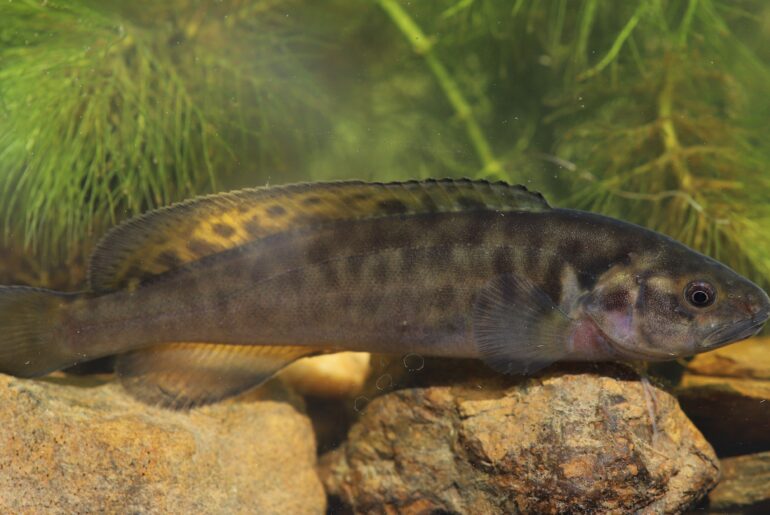Fish stocking is one tool that can be used in conservation programs to help restore threatened fish stocks. Unfortunately hatchery-reared fish are domesticated and have not learnt the skills needed to survive in the wild. Pond-reared fingerlings seem to retain live food foraging skills and some bird avoidance behaviours, but they are naïve in avoiding predatory fish. Fish reared to larger sizes (i.e. to adult or sub-adult stage) in grow out facilities tend to be fed on artificial pellet diets and are protected from birds and other predators. These fish are likely to be inexperienced in foraging for live foods and poor at avoiding predatory birds like cormorants and pelicans if stocked into the wild. Pre-release training of hatchery-reared and grow-out facility reared fish is one strategy available to improve survival after stocking into the wild. The value of pre-release training fingerlings was evaluated in this study.
Initially the project assessed the effectiveness of tank-based training by exposing fingerlings (~50-75 mm total length) of Murray cod (Maccullochella peelii), Silver perch (Bidyanus bidyanus) and Freshwater catfish (Tandanus tandanus) en masse to predatory fish and chemical alarm signals from fish skin extract. Sub-adult Murray cod and sub-adult Silver perch from grow-out facilities (where they were reared on pellet diets and protected from bird exposure) were also trained to avoid simulated cormorant attacks. Training used a combination of bird models to harass and chase fish, cormorant odour and alarm signals from fish skin extract. Sub-adult Murray cod and adult Silver perch (~300 mm total length) from grow-out facilities were also trained to take live food. To assist this process a wild Murray cod or Silver perch was introduced into each training tank to help cue the behaviours of the fish from the grow-out facilities.
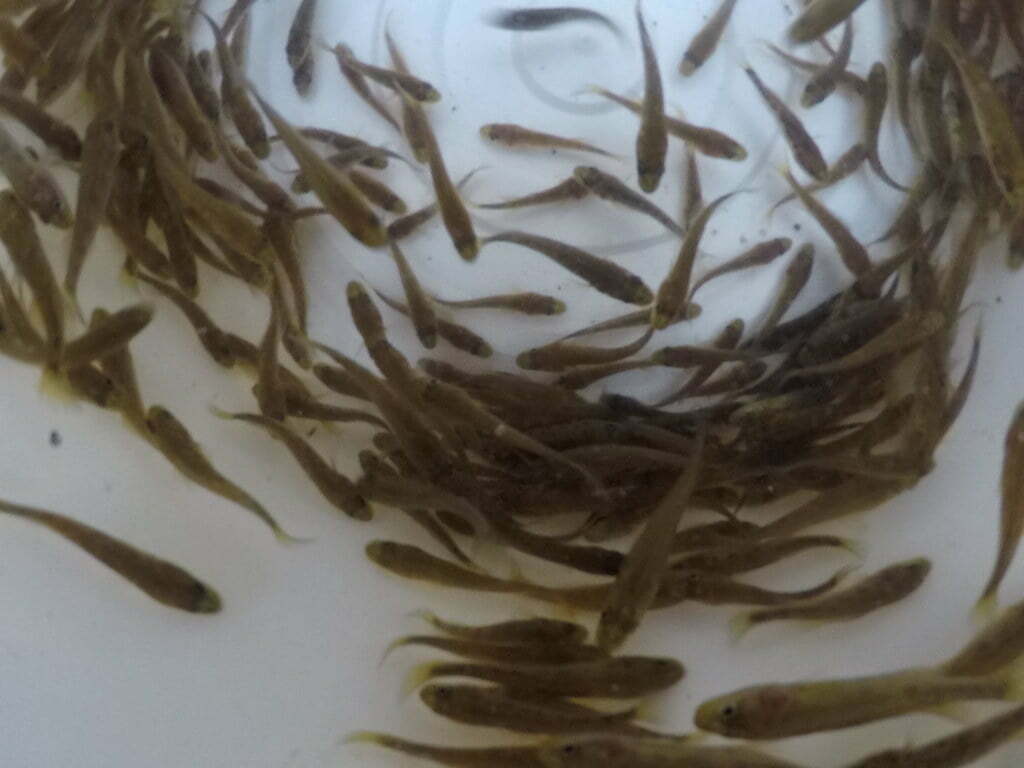
Stocking trials at three sites in the northern Murray-Darling Basin were used to test if pre-release training improved survival of stocked fingerlings of Silver perch and Murray cod. Predator free release cages were also tested as a stocking method to improve survival
Findings:
Tank-based validation experiments confirmed that this training significantly improved the predator response behaviour of all three species compared to untrained fish. At least 72 hours training was required for Murray cod and Silver perch fingerlings and 48 hours training for catfish fingerlings to significantly change predator avoidance behaviour.
Trained sub-adult Silver perch showed significant behavioural changes in response to simulated cormorant attack compared to untrained groups. However sub-adult Murray cod showed no significant change in behaviour. Sub-adult Silver perch readily adapted to taking live shrimp in the training tank, but pellet-reared cod refused to take live shrimp over a one month training period.
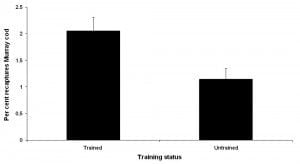
Implications for native fish:
Pre-release training of fingerlings led to a significant improvement in survival of trained Murray cod, compared to untrained control fish. At locations where predators were more abundant, the survival of trained Murray cod was up to four times higher than untrained Murray cod. Across all locations the average survival rate of trained Murray cod was twice that of untrained Murray cod.
There were no significant differences detected between trained and untrained Silver perch fingerlings stocked into the wild. One possible explanation is that Silver perch are a schooling fish. Rapid dispersal from the stocking sites and observed amalgamation of Silver perch into mixed schools of trained and untrained fish may have led to rapid social learning of the untrained fish from the trained fish.
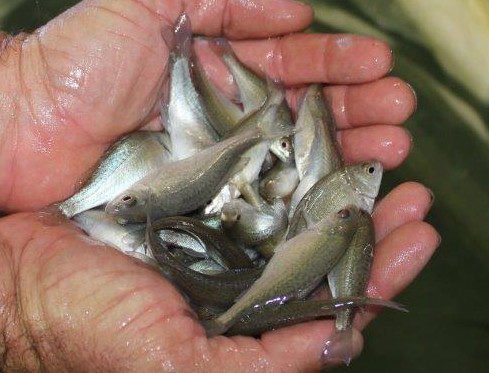
Predator abundance had a significant impact on survival outcomes for both Murray cod and Silver perch fingerlings. Survival was lowest in locations with high predator abundance. The patchiness of predator distributions within a site means it is best to use several release points at a site.
Predator release cages seemed to disadvantage the survival of stocked Murray cod fingerlings. Predator free cages neither advantaged nor disadvantaged stocked Silver perch.
Sub-adult and adult Silver perch seem to be highly trainable, but sub-adult Murray cod are not. Silver perch are a social schooling species and this may enhance training. In contrast Murray cod tend to be territorial and solitary. The use of long term pellet reared sub-adult Murray cod in conservation restocking programs should be avoided. If large fish are required for conservation stocking, translocation of wild caught sub-adults or adults may be a better option.
Full report – Hutchison, M., Stewart, D., Chilcott, K., Butcher, A., Henderson, A., McLennan, M. and Smith, P. (2012). Strategies to improve post release survival of hatchery-reared threatened fish species. MDBA Publication No. 135/11, Murray-Darling Basin Authority, Canberra.
Related stories:
Sending fish back to school
A review of domestication effects on stocked fish in the Murray–Darling Basin
